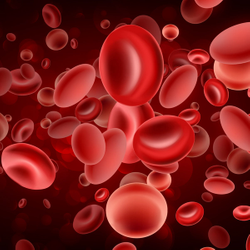Anito-Cel Shows Promising Results in Relapsed/Refractory Multiple Myeloma
Early results from the iMMagine-1 trial show anito-cel as a promising therapy in relapsed/refractory multiple myeloma.
Early results from the iMMagine-1 trial show anito-cel as a promising therapy in relapsed/refractory multiple myeloma.

Anitocabtagene autoleucel (anito-cel), a new therapy in the treatment of relapsed/refractory multiple myeloma, shows potential as a new and differentiated treatment compared ciltacabtagene autoleucel (cilta-cel; Carvykti), a recent data preview released by Gilead Sciences and partner Arcellx claims.1
New findings from the phase-2 iMMagine-1 trial (NCT05396885) offer support for this. Per International Myeloma Working Group (IMWG) criteria, the investigator-assessed overall response rate (ORR) was 95% with a complete/stringent response rate of 62%. A total of 92% of eligible patients were minimal residual disease-negative, at least to the level of 10-5.
Kaplan-Meier-estimated 6-month progression-free survival (PFS) was 90% (95% CI, 77%-96%), and overall survival (OS) was 95% (95% CI, 85%-98%).
The median page age was 66 years, and the median follow-up was 10.3 months. Additionally, all patients had received a median of 4 lines of therapy, with 45% having only 3. Of note, 69% of patients were triple-class refractory and 34% were penta-class refractory.
“Preliminary results from the first 58 patients in the phase 2 iMMagine-1 study demonstrate deep and durable responses and manageable safety in a high-risk fourth line or higher (4L+) [relapsed/refractory multiple myeloma] population including triple- and penta-class refractory disease,” the press release stated.1 “Notably, no delayed neurotoxicities, including no cranial nerve palsies, Guillain-Barré syndrome, or Parkinsonian-like symptoms have been observed with anito-cel to date.”
The FDA has previously placed a clinical hold on the phase 2 iMMagine-1 trial in June 2023 following a patient death that investigators attributed to limitations of the bridging therapy.2
The hold was subsequently lifted in August 2023 after an investigation revealed that the death was a result of a patient who was treated with anito-cel after becoming ineligible for treatment under trial protocol before infusion with the drug and was treated in a manner that conflicted with the study’s protocol.3 The FDA approved dosing of all 17 patients enrolled in the trial prior to the partial clinical hold but had not yet been dosed before the hold, which reduced disruption of the treatment.
Following the hold lift, the FDA and the developer agreed on modifications to the trial’s protocol regarding the prevention and management of adverse effects (AEs). The FDA also permitted an expanded list of bridging options for patients enrolled in the iMMagine-1 trial to better align with current clinical practice.
In 46 patients, either no cytokine release syndrome (CRS; 16%) or grade 1 CRS (64%) was observed. For 31 patients, no fever or CRS appeared in the first 4 days of anito-cel treatment.
Regarding AEs, 3 deaths occurred due to retroperitoneal hemorrhage, CRS, and fungal infection. To date, no other therapy-related deaths or grade 3 or higher CRS/immune effector cell-associated neurotoxicity (ICAN) events have taken place. Of grade 3 or higher AEs, cytopenia was the most common treatment-emergent AE; 36 patients had neutropenia, 15 had anemia, and 15 had thrombocytopenia.
Inclusion criteria included being age 18 years or older; relapsed/refractory multiple myeloma treated with at least 3 prior regiments of systemic therapy including immunomodulatory drugs (IMiD), proteasome inhibitor, and anti-CD-38; an ECOG performance score of 0 or 1; and documented measurable disease including serum M-protein, urine M-protein, and involved serum free light chain; amongst other requirements.
Exclusion criteria were history of plasma cell leukemia; treatment with high-dose systemic steroid therapy, gene therapy, prior B-cell maturation antigen directed therapy, or autologous stem cell transplantation within 3 months to treatment; severe or uncontrolled intercurrent illness/laboratory abnormalities; and contraindication to fludarabine or cyclophosphamide; among other things.
More complete findings from the iMMagine-1 trial are to be reported at the 2024 American Society of Hematology Annual Meeting.
References
- Arcellx to present clinical data for its phase 1 and iMMagine-1 studies in patients with relapsed or refractory multiple myeloma at the 66th ASH Annual Meeting and exposition and announces progress in iMMagine-3 study. News release. Arcellx, Inc. November 5, 2024. Accessed November 7, 2024. https://tinyurl.com/2u9cak8x
- Arcellx announces clinical hold for its IMMagine-1 phase 2 clinical program. News release. Arcellx, Inc. June 19, 2023. November 7, 2024. bit.ly/3NCXBKz
- Arcellx announces partial clinical hold lifted on IMMagine-1 phase 2 clinical program and reports second quarter financial results. News release. Arcellx. August 14, 2023. Accessed November 7, 2024. https://tinyurl.com/yd7zz2c2
Navigating AE Management for Cellular Therapy Across Hematologic Cancers
A panel of clinical pharmacists discussed strategies for mitigating toxicities across different multiple myeloma, lymphoma, and leukemia populations.